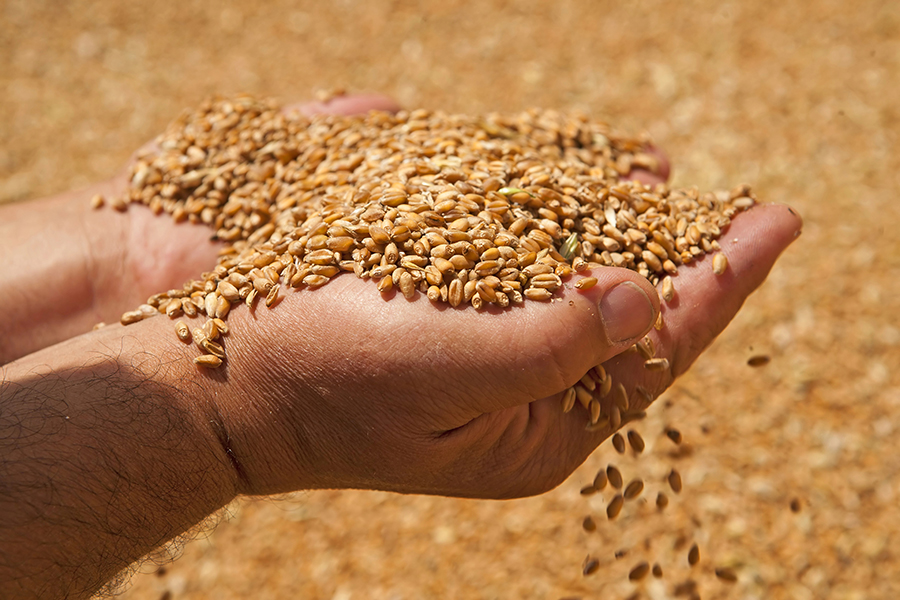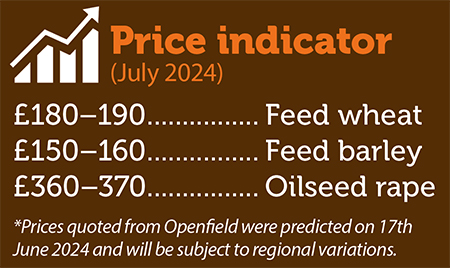Would you lick your fingers after handling your grain?
3rd July 2024
Growers must be aware of all mycotoxins that have a legislative limit, particularly in years with a wet, slow harvest.

When you’re handling grain, do you ever wonder what it may have transferred to your hands, and would you be confident that you could lick your fingers and not have any health side effects? The above may sound extreme but ultimately, you’re supplying grain to food and feed business and should always think about the ‘unseen’, says Openfield’s head of research, compliance & shipping, Cecilia Pryce.
Over the 33 years I have been trading grain, I have seen more regulation being imposed on our sector. Some of this is because we have more knowledge of what is good and bad for consumers, and some is our increased ability to test for the ‘baddies’ but how many ‘baddies’ are you aware of?
I’m sure you’re all aware of Don and Zon, as it’s a requirement on grain passports (Section 5 Fusarium mycotoxins), as is filling in the Don risk assessment score; but what about any others and what about MRLs? There are of course several other mycotoxins, including field and storage moulds that have a legislative limit which farmers, as the first supplier of the goods, are saying your grain is compliant with.
These limits cover toxins such as Aflatoxins and Ochratoxins, both largely storage moulds and T-2 and HT-2 as well as the Don and Zon. I raise this issue as the acceptable levels of some of these toxins have been lowered in the EU from 1st July 2024. The UK is still to decide if it will impose tighter standards on UK producers as well, but more importantly, will the EU standards be imposed on UK farmers by end consumers of UK grains as they sell their final product to the EU?
Similarly, as growers you should be aware of the MRLS – maximum residue levels of chemicals in your grain. There are over 600 for wheat! But if you comply with the labels and only use regulated product you shouldn’t have an issue – beware as some ‘green friendly’ unlabelled products may cause some unintended consequences.
As the trade we annually send samples off to professional labs to monitor levels of toxins and chemicals but if we have a wet slow harvest, that’s when you need to remember that damp grain in a store will grow moulds which you may not be able to see. Similarly, if you didn’t get all your sprays on in a timely manner your crops may have field moulds – again which you may not be able to see. Please start using the AHDB risk assessment tool and be ready to share it if you end up with an issue. Finally remember any ‘harvest period’ listed on labels for chemicals is there for a reason.

Another unseen comes in the form of urine. Your rodent policy is there to prevent rats and mice or other farm domestic animals from having a party in your shed. Please keep doors closed and if you have an issue with rodents be prepared to get a listeria and salmonella test done before your grain can enter the food chain. Grain goes to feed all ages of human and livestock populations so we can’t afford to make them ill or worse.
If you’re not keen to let your family lick their fingers having been in the grain store, then maybe it’s time to address your concerns!
Fertiliser matters
With new season upon us, many farmers will be thinking about fertiliser requirements for the year ahead, so why not consider liquid fertiliser? One of the main benefits of using liquid is the accuracy of application, writes Openfield’s liquid fertiliser specialist & technical advisor, Emma Vergette.
Every plant receives full nutrition everywhere the sprayer boom covers, with no fertiliser spread beyond into unwanted areas such as ditches and hedges. This accuracy and reduced product waste could be seen as a cost saving because you are not paying for fertiliser that is being spread where it isn’t utilised by target crops.
On the topic of waste, liquid fertiliser is delivered straight into tanks which saves manual unloading and eliminates bag use. Solid fertiliser takes up lots of valuable shed space to store, with two loads equating to 94 bags. Those bags require plastic, intensive manufacturing, and CO2 release to be produced. By using liquid fertiliser, you can reduce product and packaging waste which is progress towards more sustainable farming.
Read more arable news


